Hungarian Easter Traditions
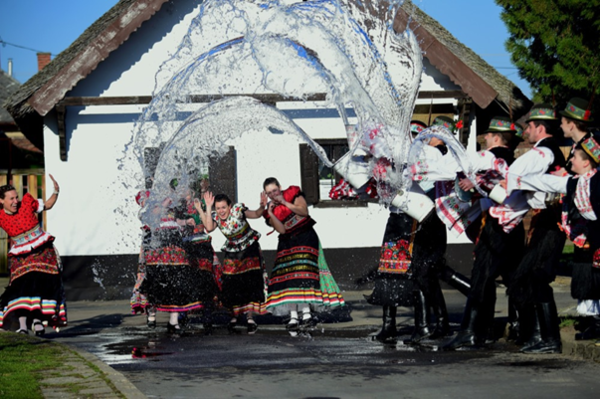
[아츠앤컬쳐] 부활절은 크리스마스 다음으로 헝가리에서 가장 중요한 명절 중 하나다. 기독교의 종교적 의식과 뿌리 깊은 민속 관습을 결합하여 예수 그리스도의 부활을 기념한다. 이 축제에는 종교적 예배, 전통 음식, 여러 세대에 걸쳐 전해져 온 독특한 의식이 포함된다. 기독교 전례력에 따라 헝가리의 부활절은 성주간으로 시작하여 부활절 일요일과 월요일에 절정을 이룬다. 이 의식은 예수께서 예루살렘에 도착하신 것을 기념하는 종려주일에 시작하여 엄숙한 금식과 기도의 날인 성금요일로 시작된다. 부활절 일요일의 하이라이트는 부활을 축하하는 교회 미사다. 부활절 월요일에는 보다 세속적이고 민속적인 성격의 축제가 열린다.
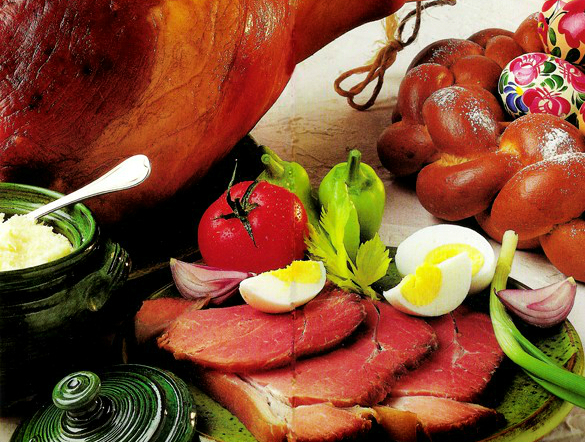
부활절을 의미하는 헝가리어 단어인 후시베트Húsvét는 hús(고기)와 vét(취하다)에서 유래되었으며, 기독교에서 지키는 40일간의 금식 기간인 사순절이 끝났음을 의미한다. 부활절이 다가오면서 사람들은 마침내 다시 고기를 먹을 수 있게 된다. 올해 주한 리스트 헝가리 문화원은 판논할마 대수도원의 베네딕트회 전통에서 영감을 받아 환경 의식을 고취하고 지속 가능한 실천을 장려하는 ‘녹색 사순절’ 캠페인에 참여했다.
헝가리 부활절 축제에서 음식은 중요한 역할을 한다. 가족들은 훈제 햄(숀카), 삶은 달걀, 땋은 부활절 빵(컬라치), 신선한 양고추냉이를 곁들인 풍성한 식사를 준비한다. 순수함과 그리스도의 희생을 상징하는 양고기와 생선도 제공된다.
달걀 장식은 헝가리에서 사랑받는 부활절 전통이다. 히메시 토야시는 정교하게 디자인된 계란으로 왁스 레지스트 기법을 사용하거나 양파 껍질, 비트 또는 시금치 등으로 천연 염색한다. 이러한 달걀은 장식적인 목적 외에도 생명, 다산 및 재생의 깊은 상징적 의미가 있다. 여성들은 전통적으로 부활절 축하 행사 때 청년에게 이러한 계란을 선물한다.
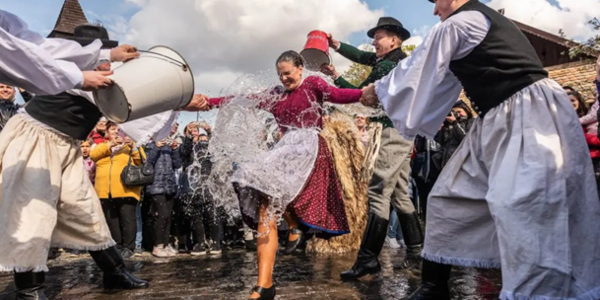
헝가리의 가장 독특한 부활절 관습 중 하나는 부활절 월요일에 지켜지는 로춀코다시, 즉 ‘뿌리기’ 전통이다. 역사적으로 젊은 남성들은 다산과 아름다움을 상징하기 위해 여성에게 물을 끼얹는다. 과거에는 양동이를 여성에게 쏟아 부었지만, 오늘날에는 남성들이 여성의 머리카락에 향수나 콜로뉴를 가볍게 뿌리면서 유머러스하거나 시구를 낭송하는 방식으로 완화되었다. 그 답례로 여성들은 장식된 달걀, 수제 과자 또는 팔링카(헝가리 전통 과일 브랜디)를 선물한다.
부활절 전통은 헝가리 전역에 걸쳐 다양하다. 일부 농촌 지역에서는 로춀코다시 의식에 민속 음악과 춤을 포함시킨다. 유네스코 세계문화유산으로 지정된 홀로쾨 마을은 역사적인 부활절 관습을 재현하는 것으로 유명하여 전 세계 방문객이 끊이지 않는다. 이 마을의 부활절 축제는 민속 예술, 전통 공예, 지역 요리를 선보이며 헝가리의 풍부한 문화 유산을 보존한다.
전통적인 부활절 관습이 널리 행해지고 있지만, 초콜릿 달걀, 부활절 토끼, 가족 모임과 같은 현대적인 요소도 인기를 얻고 있다. 그러나 헝가리 부활절의 핵심은 신앙, 부활, 문화적 자부심이 어우러진 즐거운 축제다. 종교 의식, 전통 음식, 장난기 어린 뿌리기 관습을 통해 헝가리의 부활절은 가족과 지역 사회 모두에게 소중한 명절이다.
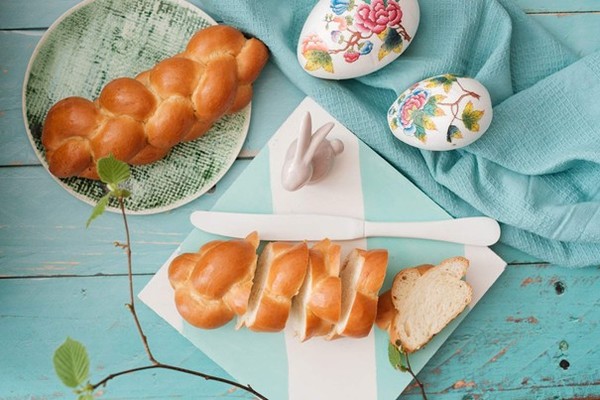
Hungarian Easter Traditions
Easter is one of Hungary’s most significant holidays, second to Christmas. It combines Christian religious observances with deep-rooted folk customs, commemorating the resurrection of Jesus Christ. The celebrations involve religious services, traditional foods, and unique rituals that have been passed down for generations.
Following the Christian liturgical calendar, Hungarian Easter begins with Holy Week and culminates on Easter Sunday and Monday. The observances start on Palm Sunday, marking Jesus’ arrival in Jerusalem, followed by Good Friday, a solemn day of fasting and prayer. Easter Sunday is the highlight, with church masses celebrating the resurrection. On Easter Monday, the festivities take on a more secular and folkloric character.
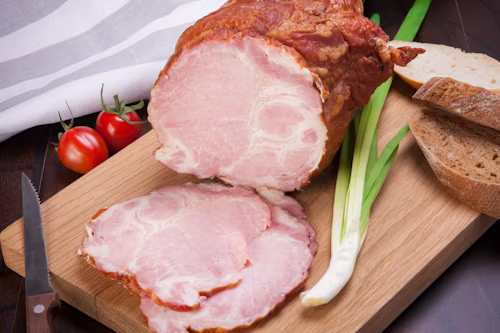
The Hungarian word for Easter, Húsvét, originates from hús (meat) and vét (take), signifying the end of Lent, the 40-day fasting period observed in Christianity. With the arrival of Easter, people can finally consume meat again. This year, the Liszt Institute – Hungarian Cultural Center Seoul participated in the "Green Lent" campaign, inspired by the Benedictine tradition of the Pannonhalma Archabbey, promoting environmental consciousness and encouraging sustainable practices.
Food plays a key role in Hungarian Easter festivities. Families prepare hearty meals featuring smoked ham (sonka), hard-boiled eggs, braided Easter bread (kalács), and fresh horseradish. Lamb and fish are also commonly served, symbolizing purity and Christ’s sacrifice.
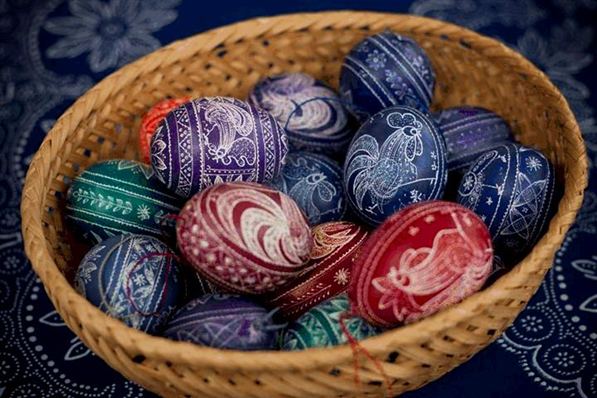
Egg decorating is a beloved Easter tradition in Hungary. Hímes tojás, or intricately designed eggs, are crafted using wax-resist techniques or dyed naturally with ingredients like onion skins, beets, or spinach. Beyond their decorative purpose, these eggs hold deep symbolic meanings, representing life, fertility, and renewal. Women traditionally gift these eggs to young men during Easter celebrations.
One of Hungary’s most distinctive Easter customs is locsolkodás, or the "sprinkling" tradition, observed on Easter Monday. Historically, young men would douse women with water to symbolize fertility and beauty. While in the past, this meant pouring buckets of water over them, today, the custom has softened, with men lightly sprinkling perfume or cologne on women’s hair while reciting humorous or poetic verses. In return, women offer them decorated eggs, homemade sweets, or a shot of pálinka (a traditional Hungarian fruit brandy).
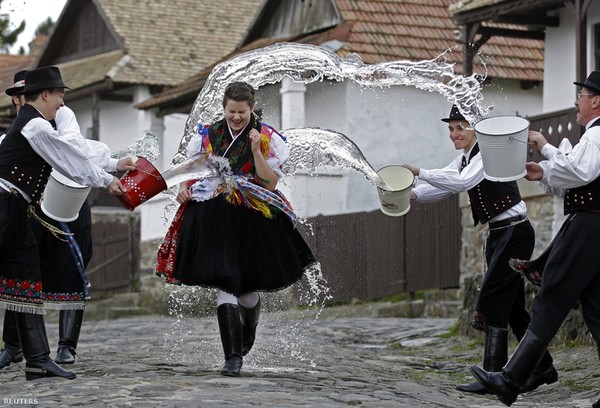
Easter traditions vary across Hungary. Some rural communities incorporate folk music and dance into the locsolkodás ritual. The village of Hollókő, a UNESCO World Heritage site, is known for re-enacting historical Easter customs, attracting visitors from around the world. The village’s Easter Festival showcases folk art, traditional crafts, and regional cuisine, preserving Hungary’s rich cultural heritage.
While traditional Easter customs remain widely practiced, modern elements such as chocolate eggs, the Easter bunny, and family gatherings have also become popular. However, the heart of Hungarian Easter remains a joyful blend of faith, renewal, and cultural pride. Whether through religious observances, traditional foods, or the playful sprinkling custom, Easter in Hungary remains a cherished holiday for families and communities alike.

글 ㅣ Katalin Ruzsa
주한리스트헝가리문화원 문화사무관
Liszt Institute - Hungarian Cultural Center Seoul


